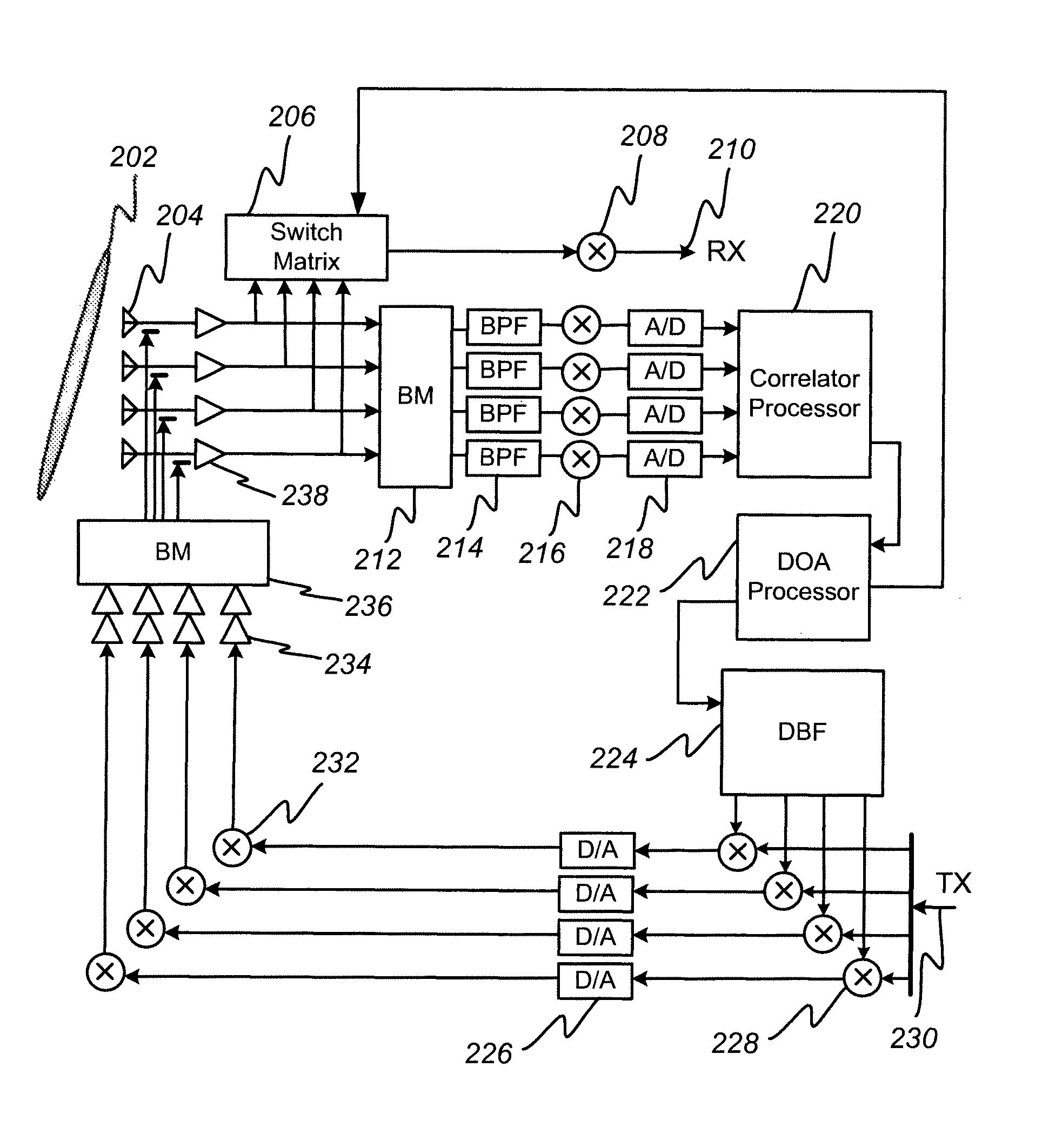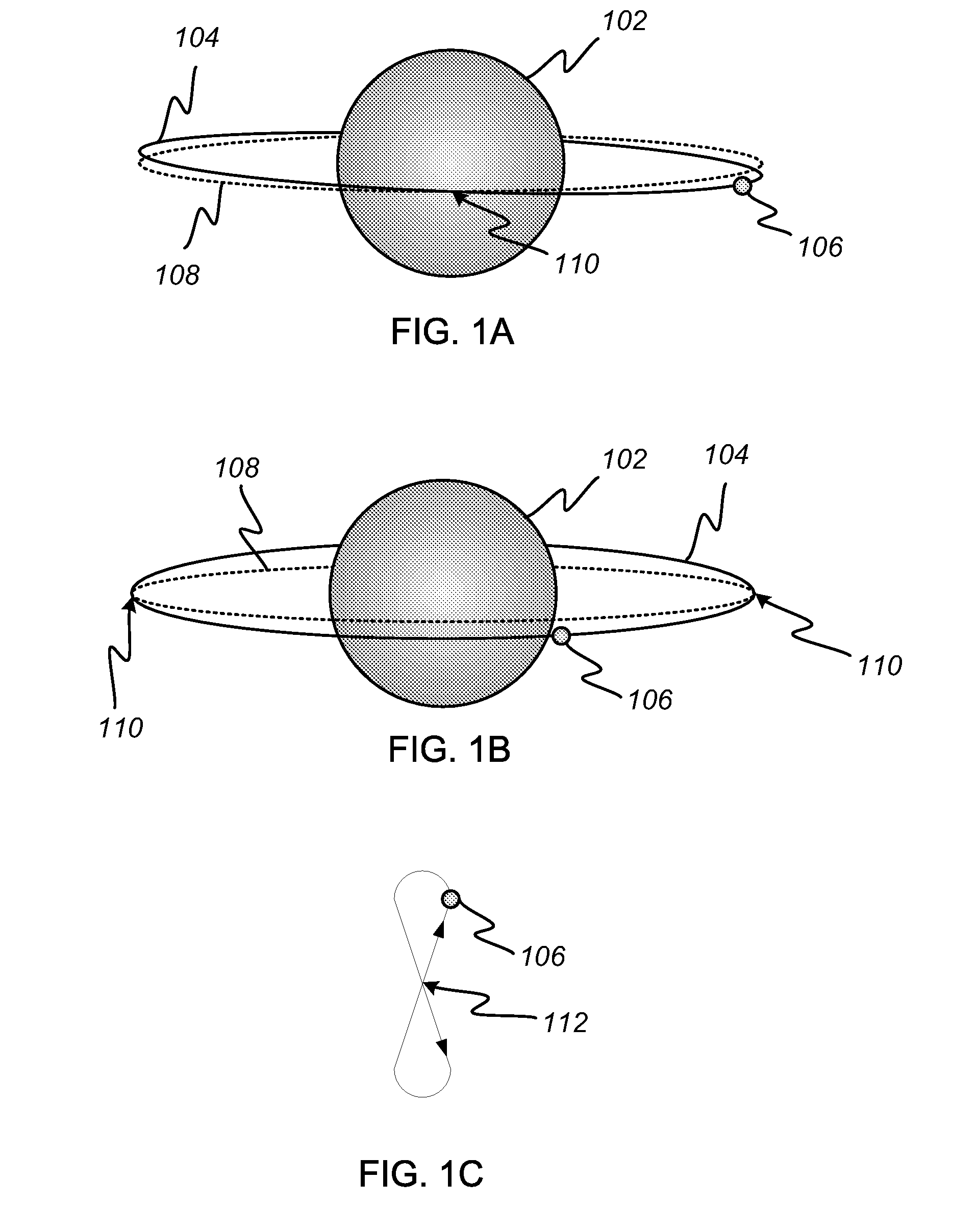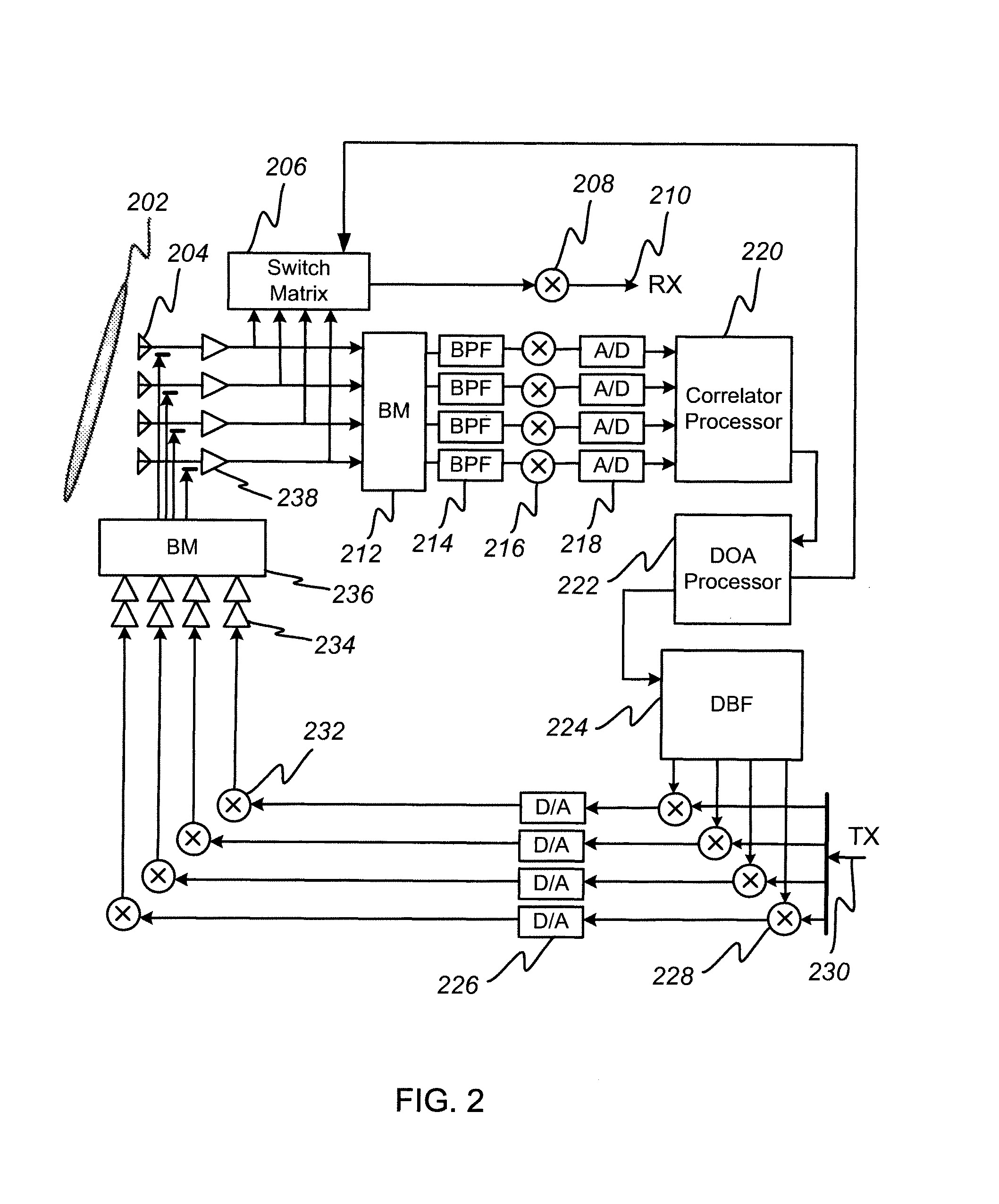Retro-directive ground-terminal antenna for communication with geostationary satellites in slightly inclined orbits
a geostationary satellite and ground-terminal technology, applied in antennas, antenna details, electrical equipment, etc., can solve the problems of satellite orbit drifting away, severe signal loss, bulk, complexity, etc., and achieve high gain
- Summary
- Abstract
- Description
- Claims
- Application Information
AI Technical Summary
Benefits of technology
Problems solved by technology
Method used
Image
Examples
Embodiment Construction
[0033]The invention provides a simple, low-cost, limited-scan-angle, retro-directive antenna featuring an array feed capable of steering the antenna pattern to track orbital excursions of a geostationary satellite in an orbit inclined with respect to the equator by several degrees. In the detailed description that follows, like element numerals are used to indicate like elements appearing in one or more of the figures.
[0034]FIGS. 1A-C depict the motion of a typical geostationary satellite 106 in orbit around the Earth 102. The ideal geostationary orbit 108 lies directly above the Earth's equator and results in the satellite's appearing stationary in the sky with respect to an observer on the ground. Due to gravitational perturbations, the actual orbit 104 of the satellite drifts, becoming inclined by up to several degrees with respect to the equator. Periodic station-keeping maneuvers are undertaken to bring the actual orbit back toward an inclination of zero degrees. The inclined o...
PUM
 Login to View More
Login to View More Abstract
Description
Claims
Application Information
 Login to View More
Login to View More - R&D
- Intellectual Property
- Life Sciences
- Materials
- Tech Scout
- Unparalleled Data Quality
- Higher Quality Content
- 60% Fewer Hallucinations
Browse by: Latest US Patents, China's latest patents, Technical Efficacy Thesaurus, Application Domain, Technology Topic, Popular Technical Reports.
© 2025 PatSnap. All rights reserved.Legal|Privacy policy|Modern Slavery Act Transparency Statement|Sitemap|About US| Contact US: help@patsnap.com



